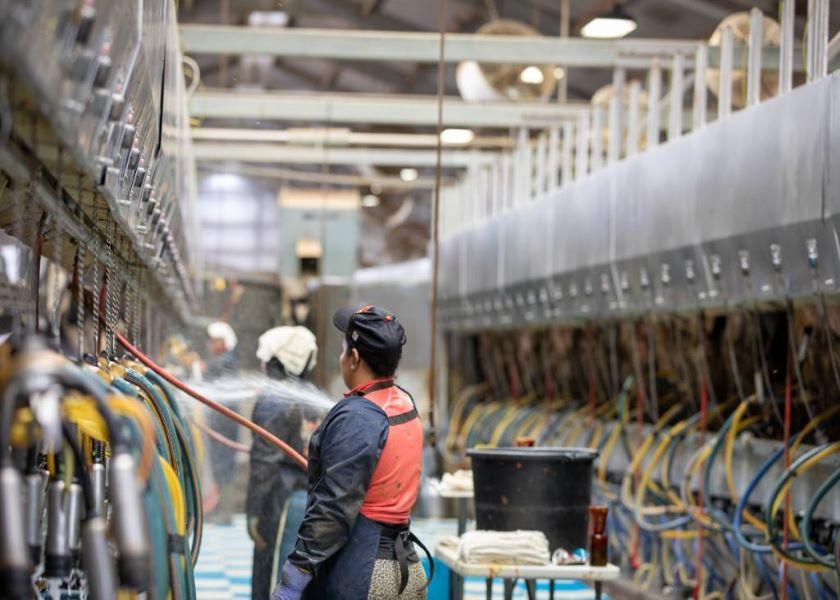Tackling Labor Shortage on Your Farm

Like many dairy farms, La Luna Dairy struggles to find enough workers to keep their 1,400-cow Colorado dairy humming. Not too long ago it did not matter how many help-wanted ads they put out, they only had 23 of their 28 full-time positions filled. “Labor shortage is a big challenge,” owner Jon Slutsky says. “Although we are doing better for the moment, even though we are frequently at least one employee short.”
The struggle is felt far beyond the Colorado dairy farm. Labor shortage is a top concern and a constant headache for many dairy farmers from coast to coast.
“Attracting and keeping employees is a shared challenge for dairy farmers facing competitive labor markets and labor shortages,” Nicole Ayache, senior director of sustainability initiatives for National Milk Producers Federation (NMPF) says.
According to Luis Carcamo, Chief Operating Officer for Agri-Placement Services (APS), the labor shortage topic stems from many factors, including an aging population and the migration of the younger generations to cities, reducing the pool of available workers. While dairy farms across the country are facing similar labor problems, some states have more established communities than others. “For example, the state of New York might be more attractive [for employees] than Pennsylvania because of higher starting wages, overtime pay and strong farm worker union presence,” he says.
Resources Available
Leading the FARM Workforce Development Program (WFD) at NMPF, Ayache says free producer resources are available. The FARM website has a plethora of resources, including hiring tips for dairy farms, a Human Resources (HR) Manual, HR templates including a job application form, a new hire checklist and a sample employee handbook.
“The expanded suite of educational materials helps farmers who want basic HR tools and safety practices for their employees to increase worker engagement, reduce employee turnover and manage liabilities from the safety risks of dairy farming,” Ayache says.
Following a consistent new hire process for all employees is essential and FARM WFD recommends following a consistent process for all employees. Having a good recruitment and hiring process in place impacts dairy operations in the following ways, according to the program’s HR Manual:
- Helps farms hire qualified, responsible, and reliable employees.
- Decreases turnover.
- Increases retention.
- Decreases the chance of legal issues arising from the recruitment and hiring process.
- Lowers costs associated with training and turnover.
No matter the size of the dairy, FARM WFD notes that it is important to have a consistent hiring process to avoid claims of partiality or discrimination. This means that each step in the hiring process should be followed for all new hires, even if the owner or manager knows the new hire, there are family ties, etc. A step can be skipped or added only if the new hire process is revised for a specific class of employees (e.g. no motor vehicle record screening for employees who will not have driving responsibilities or a credit check for an employee with access to finances).
Additional Benefits
For dairy farms increasing pay is hard to do, especially when margins are razor tight. In a Glassdoor study, 79% of employees would rather have new or additional benefits instead of a pay increase. Providing competitive benefit packages allows farms to remain competitive in the labor market by attracting skilled and qualified workers. It also sets farms apart from the competition who pay similar wages to their workers. Some benefits to consider include health benefits, meal and lodging, paid time off and bonus and incentive pay. According to the FARM HR Manual: “By offering a fair and competitive compensation and benefits package, farms can be sure they are attracting and retaining skilled and qualified workers.”
Providing housing can be a valuable benefit for any farm worker. Housing options can be scarce, especially in rural areas. Offering employee housing can reduce the burden on the employees to find housing, helps them avoid long commutes, and provides them with an affordable place to stay, all of which attracts high qualified farm workers. In the end, many industries are competing for the same pool of workers. Carcamo says to compete, wages need to be competitive, however, it is not the only factor. “APS strongly encourages dairies to offer housing as part of the compensation package,” he says. “But it is not the only factor.”
Beyond compensation package setting expectations from the beginning is important and working hard on promoting team building is vital. "Trust is the secret sauce, and you can only get there by spending time on team-building activities,” Carcamo adds.







